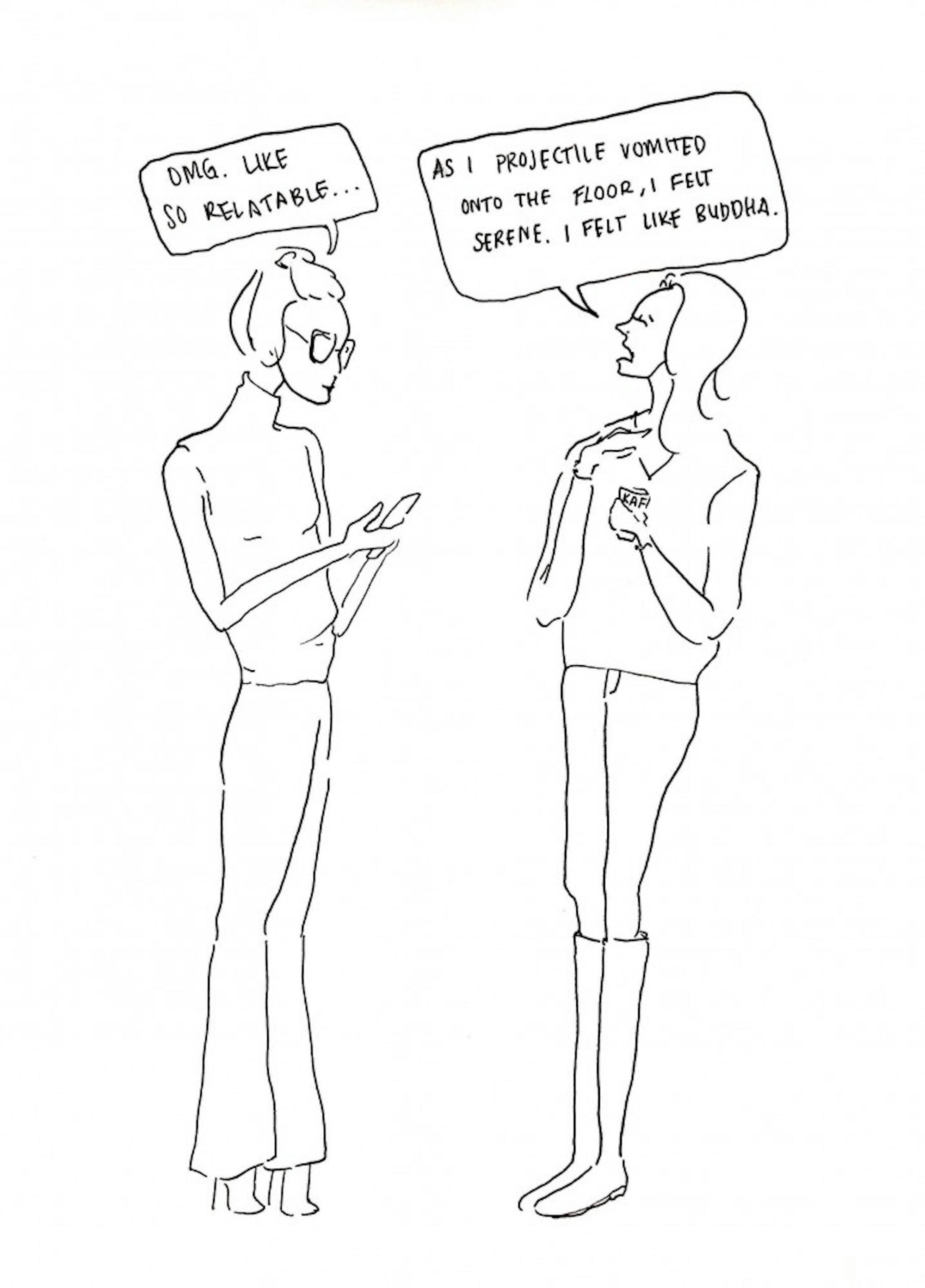Long gone are the days of struggling to pick your Top Eight friends on Myspace, engaging in poke wars via Facebook and chatting with your friends on AIM while your parents aren’t using the shared family computer. While social media may have drastically evolved, its prominence in everyday life has only increased. We are constantly connected, engaged in a continuous cycle of posting, reposting, updating, liking and commenting. We feel inclined to update our followers every time we go to Starbucks, visit that trendy brunch spot in the city, walk past a particularly striking tree or go to a concert.
Our feeds are flooded with perfect day after perfect day. There’s always something happening each night, and if you’re not there, you’re missing out. Yet there is one part of life most of us would never dare show our followers: the bad part. My Snapchat streaks will rarely see a picture of me crying, and every Instagram photo is carefully curated to match my feed and give off the illusion of perfection. In the midst of feigned idealism, one social media emerges as raw and frank: the finsta.
What is a finsta? Hidden in plain sight, a finsta — short for fake Instagram — is typically a person’s second Instagram account in which the user posts rants, life updates, funny anecdotes and relatable memes. These examples do not provide an exhaustive list; they’re just the tip of the iceberg. Unlike its counterpart, a finsta is categorized by its distinctive lack of filtering, editing or any other means of curating. This allows for more frequent posting.
Additionally, while a large number of Instagram followers is often coveted, finstas are generally regarded as more personal and exclusive. Users tend to be more selective when choosing the people who are allowed to follow their finsta. Although we might want everyone to see our lives’ most exciting and “Instagramable” moments, our secrets, stories and struggles are kept relatively hidden on our finstas.
At Dartmouth, this lack of filter on social media can be particularly revealing. Surrounded by interesting, motivated, high-achieving students, it is easy to fall victim to the misconception that everyone is happy all the time. My feed is flooded with pictures of foliage and laughter, but finstas may provide a different perspective on the personal lives of our peers.
The perspective that we gain varies depending on how each individual uses their finsta. For some people, finstas are simply a method of communicating with multiple close friends at once. Samantha Carranza ’22 said that she uses her finsta for “updating [her] friends and talking about certain aspects of [her] day.”
Finstas are especially useful for connecting with friends at different colleges whom students might not get a chance to speak to everyday. Ashley Lewis ’22 agreed with Carranza, adding that through her finsta she is able to “see what’s happening in [her friends’] college experiences … all over the country.”
By gaining access to the daily lives of our friends, we can compare experiences. It is important to recognize that we share similar struggles with our peers — even those not at Dartmouth. We would not be able to come to this realization through Instagram alone. However, through finstas we can relate our problems to each other.
“It’s nice to know that we’re going through very similar things … it’s not always so fun and happy,” Lewis said.
This is especially true during stressful times, such as midterms and finals. It is comforting to understand that we do not struggle alone and the problems that we face exist outside of Hanover.
Yet, in an effort to relate, some users do not show their true selves. Carranza highlighted that some people try to be other versions of themselves on their finstas.
“[On finsta accounts people] try to be funny and seem more relatable than they actually are,” Carranza said.
Although there is often a wide range of posts on one’s finsta, the positive posts tend to be more well-received. Some people use their finstas to relieve stress and look at lighter, funnier content. Lewis finds this aspect of finstas appealing.
“I look at [my] finsta more than I look at Instagram just because it has funny, relatable posts with my friends, and it’s more real than Instagram,” Lewis said.
However, one aspect of finstas that Lewis does not enjoy as much is the long rants that she finds users often post. She does not think these posts are entertaining or engaging for the user’s followers. Sanjana Goli ’22 felt similarly to Lewis.
“I skip through a lot of [posts] when they’re long,” Goli said.
Goli added that she personally sticks to upbeat posts on her finsta.
“I don’t really like to post negative things, and when I do it’s not anything about someone,” she said.
It is evident that even on finstas, there are limitations to what users should post. While finstas are a medium to share your thoughts — good or bad — with others, many people who follow finsta accounts are more responsive to funny and happy posts.
Comparing primary Instagram accounts to finstas yields the question: which provides a more accurate representation of the user? It would be misguided to judge someone solely from their social media presence. Even within social media, people can choose how they represent themselves. As Carranza states, when combined, the two kinds of accounts reveal “two sides of the same person.”
We are a combination of our successes and our hardships. We are not our feeds. The filtered beach pictures, exotic vacations and group photos full of smiling faces are often coupled with insecurity, anxiety and doubt. It is impossible to represent the complexity of our personalities in mere photos and captions. Social media may provide a glimpse into one’s life, but it is never the full story. When scrolling through Instagram, ask yourself if you really know who you follow, and challenge yourself to take a look at the person behind the username.




